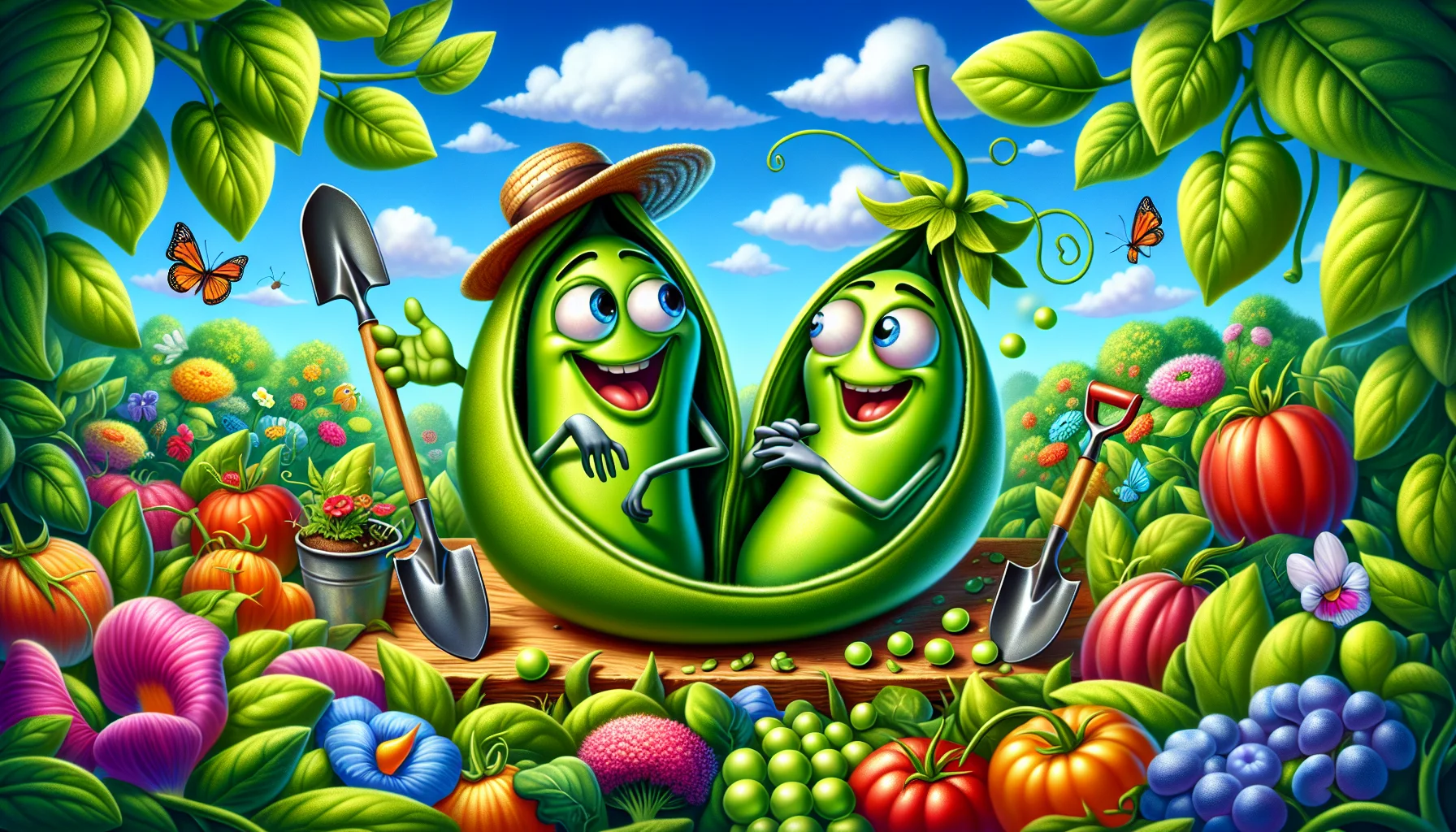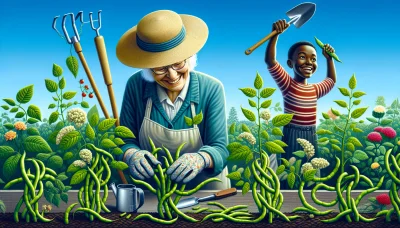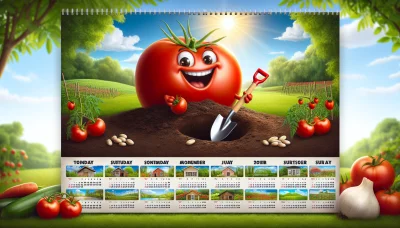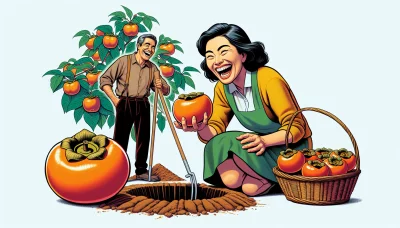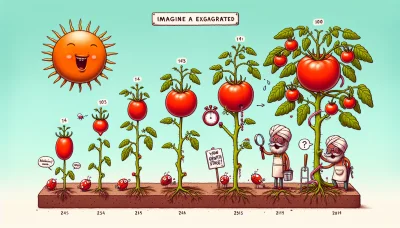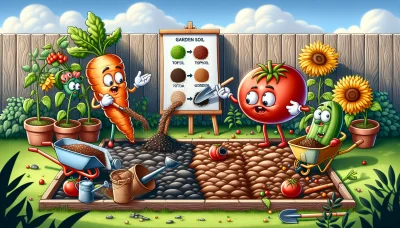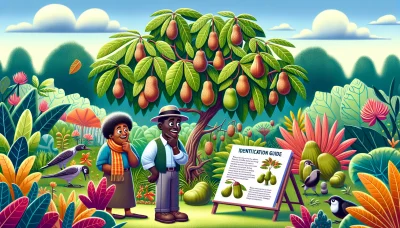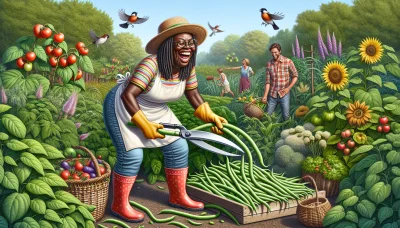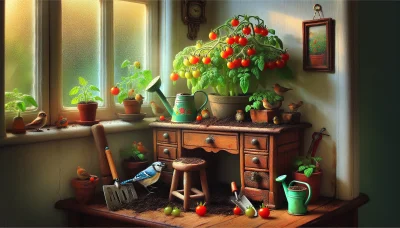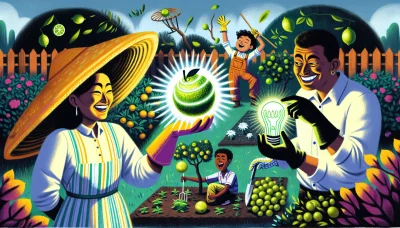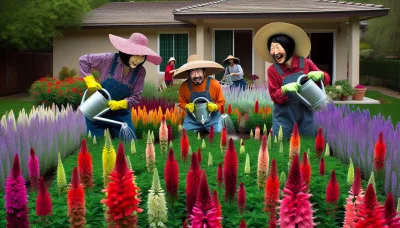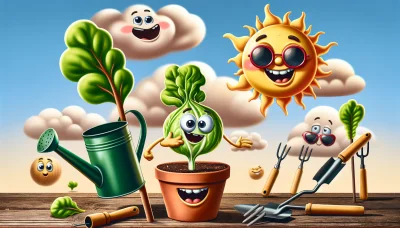Pea in a pod Quiz
Test Your Knowledge
Question of
Understanding the Basics of Growing Peas in a Pod
Pea cultivation in home gardens is a rewarding endeavor for many gardeners, offering the joy of harvesting fresh, sweet peas right from the pod. The fundamentals of growing peas start with choosing the right time to plant. Peas thrive in cooler temperatures, making early spring or late fall ideal for sowing seeds directly into well-drained, fertile soil. It's essential to provide support for climbing varieties, such as trellises or stakes, to encourage vertical growth and increase air circulation around the plants. Regular watering, especially during the flowering and pod development stages, is crucial for pea plants, although it's important to avoid waterlogging the soil. Additionally, peas benefit from a location that receives full sun to partial shade. With these basic care tips, gardeners can enjoy a bountiful harvest of peas, perfect for enjoying fresh or using in a variety of dishes.
Choosing the Right Pea Varieties for Your Garden
When it comes to planting peas in your garden, it's important to choose the right variety to suit your culinary preferences and gardening conditions. Among the most popular types are snow peas, snap peas, and garden peas. Snow peas are characterized by their edible pods with flat, thin walls, and are often used in stir-fries. Snap peas, also known as sugar snap peas, have plump pods with a crunchy texture and sweet flavor, making them perfect for snacking or adding raw to salads. Garden peas, or English peas, require the removal of peas from their pods before eating. They are known for their deliciously sweet flavor when cooked and are a staple in many traditional dishes. Each type has its own growing requirements and benefits, so consider what works best for your garden space and taste preferences.
Step-by-Step Guide to Planting Peas
- Choose a sunny spot in your garden with well-draining soil.
- Prepare the soil by turning it over and mixing in compost or aged manure to add nutrients.
- Ensure the soil temperature is at least 45°F (7°C) as peas are cool-weather crops.
- Create rows in the soil about 1.5 to 2 feet apart to provide ample growing space.
- Soak pea seeds in water for 24 hours before planting to speed up germination.
- Sow seeds about 1 inch deep and 2 inches apart in the rows.
- Cover the seeds with soil gently and water the area thoroughly.
- Install supports like trellises or stakes for climbing pea varieties to grow on as they mature.
- Keep the soil moist but not waterlogged, especially during flowering and pod formation.
- Watch for pests such as aphids and take measures to protect the plants if necessary.
- Harvest peas when pods are plump and bright green for the best flavor.
Caring for Your Pea Plants
To ensure your pea plants thrive, it's essential to provide them with proper care, which includes appropriate watering, fertilization, and pest management. Water your pea plants deeply once a week, allowing the soil to dry slightly between waterings, as overwatering can lead to root rot. Fertilize your peas sparingly; they require less fertilizer than many other vegetables because they fix their own nitrogen from the air. A low-nitrogen or balanced fertilizer applied at planting and mid-season is sufficient. For pests such as aphids and pea weevils, regularly inspect your plants and use organic pesticides or introduce beneficial insects like ladybugs into your garden. Such attentive care will help your pea plants grow healthy and produce abundantly.
Common Challenges in Growing Peas
- Powdery Mildew: A fungal disease that coats leaves in a white, powdery substance. Combat this by ensuring good air circulation around plants and using fungicide treatments if necessary.
- Fusarium Wilt: A soil-borne fungus that causes plants to wilt and die. Rotate your pea crops and choose resistant varieties to prevent it.
- Pea Aphids: Small green insects that feed on sap, weakening plants. Wash them off with a strong jet of water or use insecticidal soap.
- Root Rot: Overwatering can lead to this condition, where the roots of pea plants rot and die. Ensure well-draining soil and water only when necessary.
- Pea Moth: These moths lay eggs on pea flowers, and the emerging caterpillars eat the seeds within pods. Use floating row covers to prevent moths from laying eggs on the plants.
Harvesting and Storing Peas
Harvesting peas at the right time is crucial for getting the best flavor and texture. Peas should be picked when they are plump but not overly mature, as they can become starchy and less sweet. The pods should feel full, and you can test a few by opening them to check the size of the peas inside. For most varieties, this is usually a few weeks after flowering. Harvesting in the morning when temperatures are cooler will result in crisper peas. After harvesting, peas should be cooled as soon as possible to retain their sweetness. For storing, peas can be kept in the refrigerator for about a week. For longer storage, blanching peas for 1-2 minutes and then freezing them is an effective method. This way, you can enjoy your peas for several months, preserving their fresh taste and nutritional value.
Delicious Recipes Using Fresh Peas from the Garden
| Recipe | Ingredients | Cooking Instructions |
|---|---|---|
| Spring Pea Salad | Fresh peas, mixed salad greens, radishes, feta cheese, olive oil, lemon juice, salt, pepper | Combine peas, salad greens, sliced radishes, and crumbled feta in a bowl. Dress with olive oil, lemon juice, salt, and pepper to taste. |
| Pea and Mint Soup | Fresh peas, vegetable broth, chopped onion, mint leaves, butter, salt, pepper | Sauté onion in butter until soft. Add peas, broth, and mint leaves. Simmer until peas are tender. Blend until smooth. Season with salt and pepper. |
| Peas and Carrots Stir Fry | Fresh peas, carrots, garlic, soy sauce, sesame oil, sugar | Slice carrots thinly. Stir fry garlic, then add carrots and peas. Add soy sauce, sesame oil, and a pinch of sugar. Cook until vegetables are tender. |
| Pea Pesto Pasta | Fresh peas, basil leaves, Parmesan cheese, garlic, olive oil, pasta, salt, pepper | Blend peas, basil, Parmesan, garlic, and olive oil to make pesto. Season with salt and pepper. Toss with cooked pasta. |
